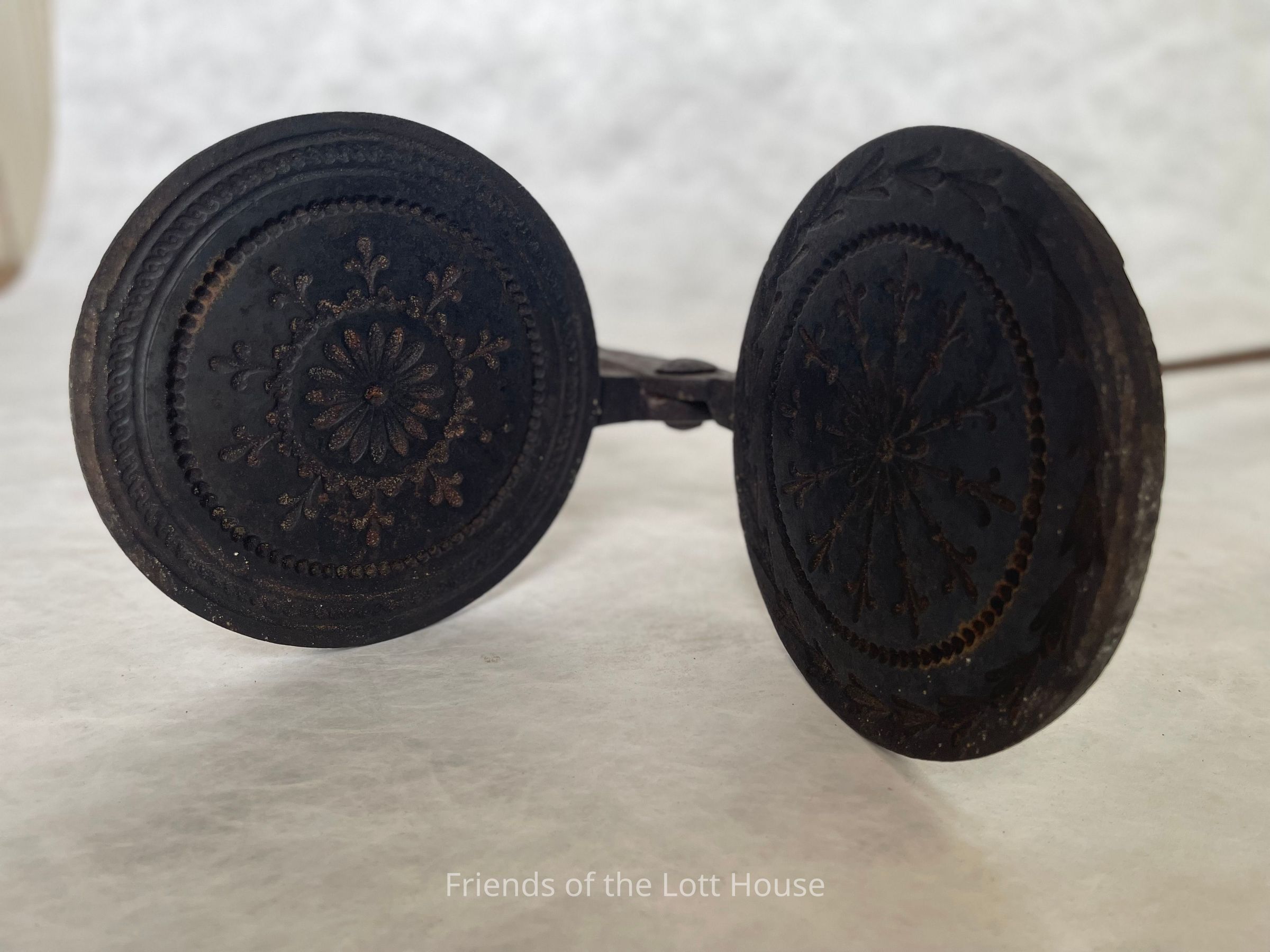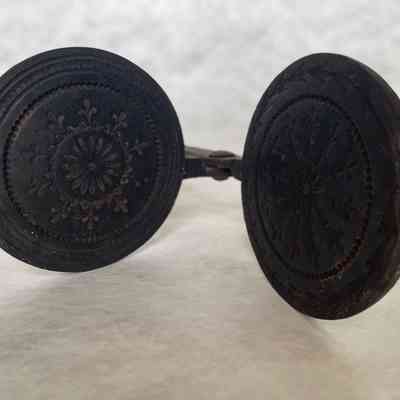Wafer Iron

The plates of waffle irons were typically made of cast iron, a material common in kitchen tools of the time due to its durability and heat retention. The handles of waffle irons were long and typically made of wood or metal. The long handles helped the cook hold the hot iron over the fire without burning themselves. They often had decorative patterns etched into the metal, such as flowers, grids, or geometric shapes. This one from the Stuart and Annette Mont Collection, of objects from the Wyckoff-Bennett-Mont House, features two intricate patterns on each side of the plate. They would place the waffle iron over an open flame. After it was properly heated, the cook would grease the plates with butter or lard to prevent them from sticking, and then pour the batter into the iron. The iron was then clamped shut and held over the heat for a few minutes, carefully turning it to ensure that both sides cooked evenly. The result was a crisp, golden waffle with a pattern from the iron plates. Waffle-making was a labor-intensive process, requiring careful attention to heat and timing, which made waffles a somewhat special, often celebratory food.
